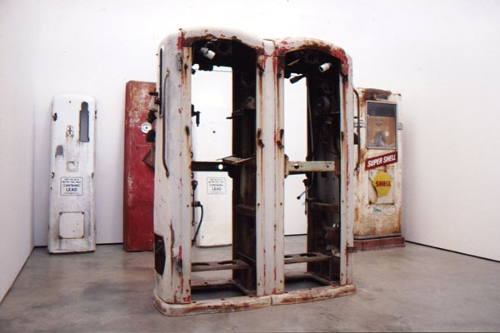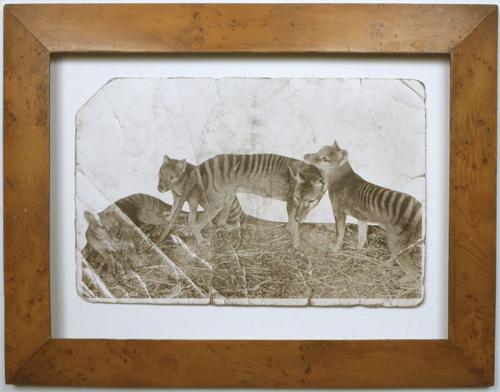Search
You searched for contributors, issues and articles tagged with Economy ...
Contributors
Artlink
Adrian Jones
Alison Carroll
Amareswar Galla
Amy Morgan
Andrew Montana
Anita Aarons
Ann Finegan
Anna Bagshaw
Anna Davern
Anna Ward
Anne Kirker
Anne O'Hehir
Barry Craig
Ben Curnow
Bert Flugelman
Bilal Khbeiz
Binghui Huangfu
Brian Tucker
Brigitta Olubas
Britta Erickson
Catherine Lumby
Catherine Speck
Chang Tsong-Zung
Charles Pickett
Christine Nicholls
Christopher Anderson
Christopher Crouch
Christopher Saines
Clare Lewis
Claude Willey
Claudine Brown
Dale Spender
Daniel Thomas
Deborah Malor
Des Griffin
Diana Klaosen
Diana Quillaen
Dinah Dysart
Donald Brook
Dorothy Broom
Dylan Rainforth
Elizabeth Cross
Felena Alach
Fotis Kapetopoulos
Freda Freiberg
Gay Bilson
Geoffrey Legge
Geoffrey Maslen
George Petelin
Greg McCarthy
Gregory Kwok-Keung Leong
Gu / Yang Zhenqing / Li
Hannah Fink
Hawthorne Lucy
Heather Ellyard
Helen Andreoni
Helen Grace
Henrietta Fourmile-Marrie
Huang Du
Ian Cook
Ian Hamilton
Ian Howard
Ian North
Ian Wedde
Ingrid Periz
Jacqui Stock
Jane Deeth
Janet Maughan
Jazmina Cininas
Jennifer Isaacs
Jennifer Phipps
Jo Higgins
Joanna Mendelssohn
John Clark
John Neylon
Jude Adams
Judith Abell
Judith Brine
Juliana Engberg
Julie Ewington
Juliette Peers
Kajri Jain
Karen Brown
Karen Smith
Ken Scarlett
Linda Marie Walker
Louisa Teo
Louise Dauth
Lourd de Vera
Margriet Bonnin
Marian Pastor Roces
Marjorie Johnson
Marla Guppy
Max Bourke
Melinda Rankin
Mina McKenzie
Mireille Astore
Naomi Cass
Naomi Gall
Issues
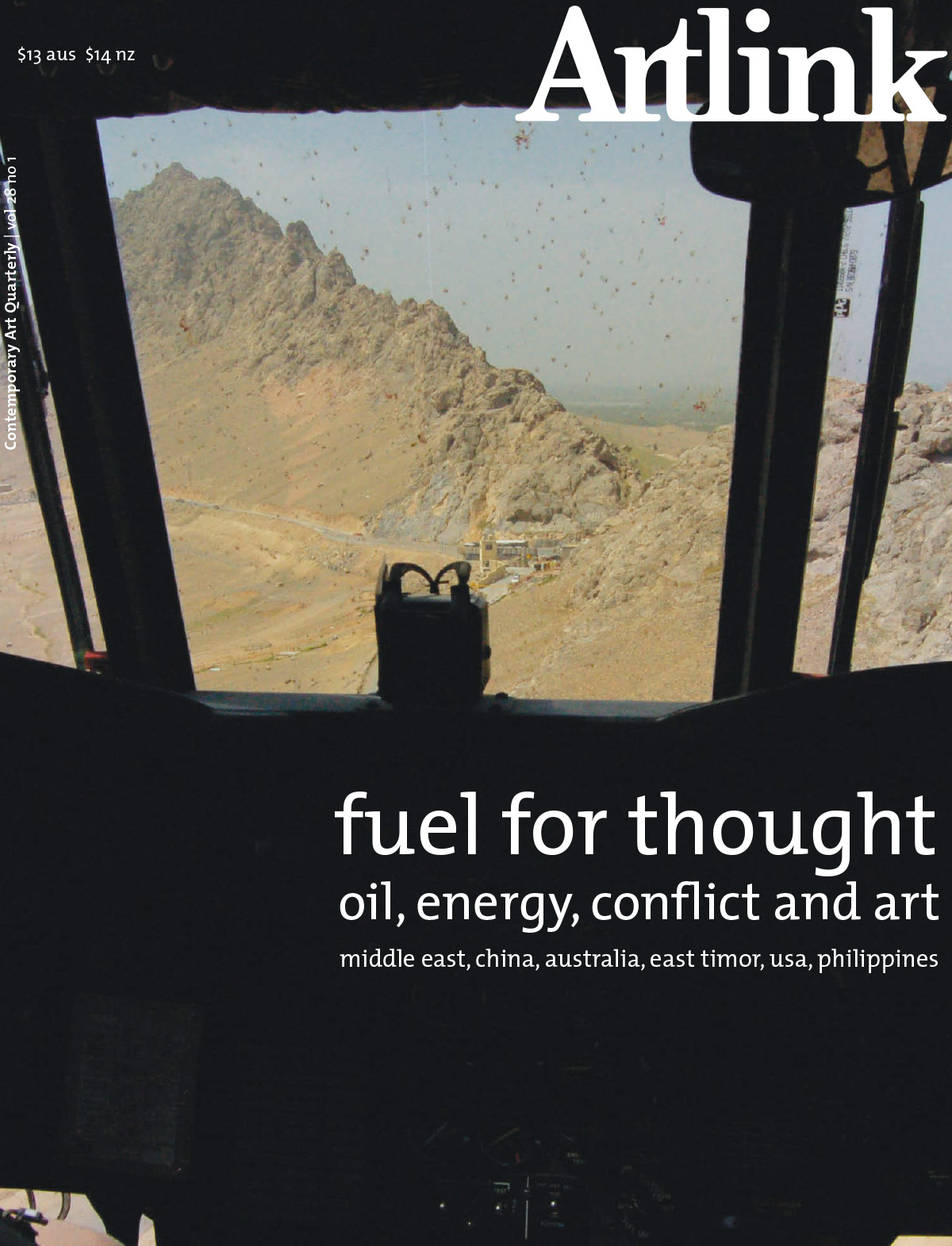
Fuel for Thought
Issue 28:1 | March 2008
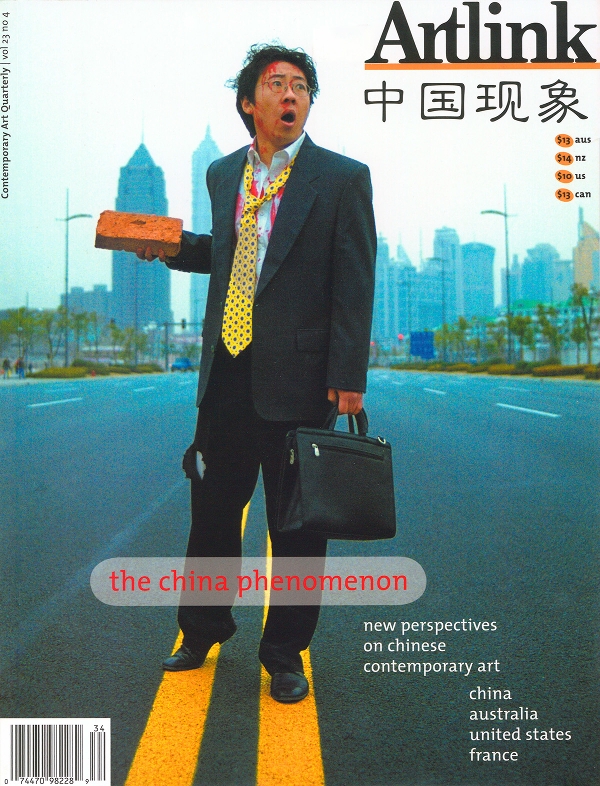
The China Phenomenon
Issue 23:4 | December 2003
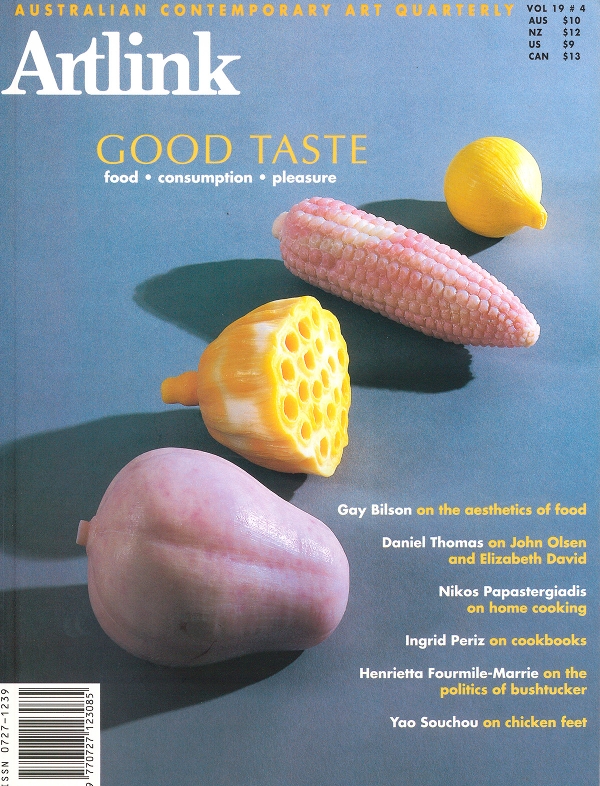
Good Taste: Food, Consumption & Pleasure
Issue 19:4 | December 1999
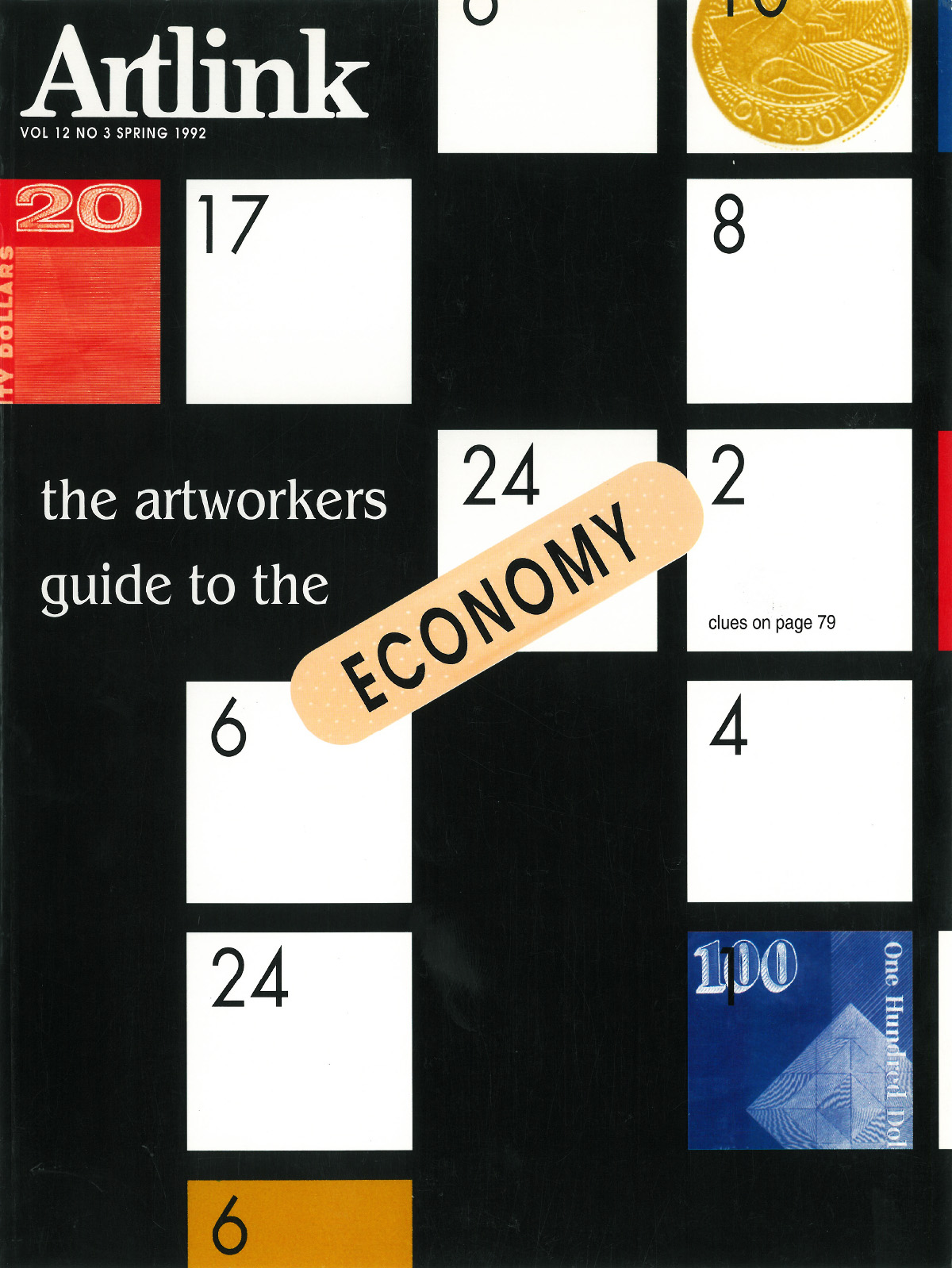
Art and the Economy
Issue 12:3 | September 1992
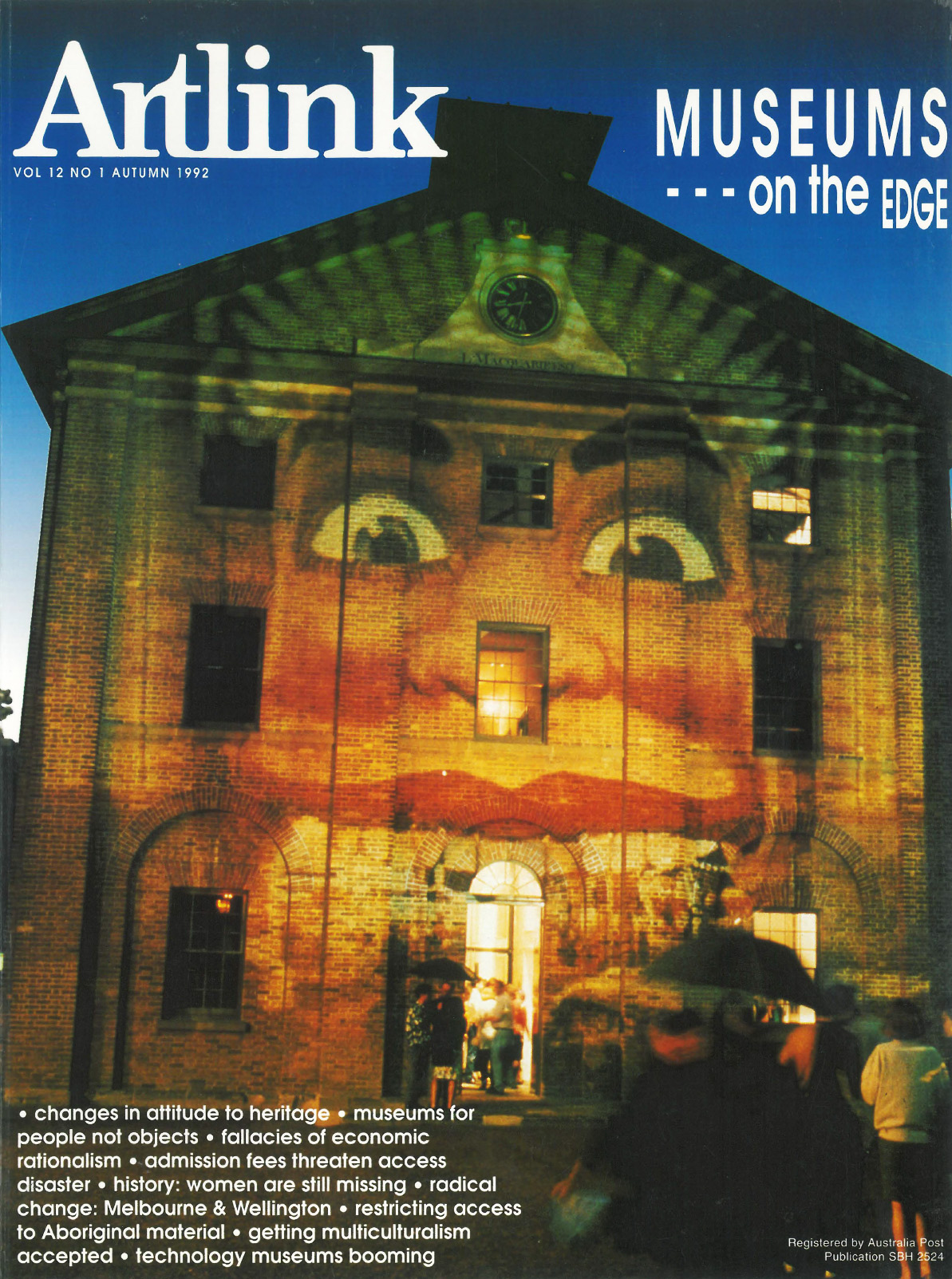
Museums on the Edge
Issue 12:1 | March 1992
Articles

A rusty sign at the end of a bloody empire
At Magnet Gallery in Quezon City Filipino artist Norberto Roldans exhibition Oil goes beyond the local situation and deals with the theme of peak oil as the root of all geopolitical evil, with the United States of America as the primary agent of ill intent. Lourd de Vera vividly describes it as a deliberate exercise in propaganda and sloganeering. Roldan takes a broad historical view and reflects on US policy in the Philippines over time while the rusting Caltex sign embedded in the exhibition asserts a warning: no empire lasts forever.

Conducting Mobility
Artists thinking and making work about fuel span the globe and delve into a wide range of ramifications. UK-based PLATFORM have done a multi-pronged report called Unraveling the Carbon Web on four oil-producing hot spots, Iraq, Nigeria, Russia and the Caucasus. Chicago-based Laurie Palmers Notions of Expenditure solicits renderings of exercise equipment and gyms redesigned for the production of electricity. Brian Collier wanders the edges of Illinois highways to locate thriving non-human life forms. kanarinka documented her running of the official evacuation route out of Boston while collaborators Kim Stringfellow, Amy Balkin, Tim Halbur, Pond and Greenaction made an audio guide for a Californian highway drawing its military, residential and agricultural stories together.

Watching as the enchanted land meets its end: Qiu Anxiong
With traditional Chinese brush painting skills Qiu Anxiong's three screen video animation New Book of Mountains and Seas, Part 1 shows the history of the world from its genesis as a vast sea to cities on the edge of destruction. It shows cycles of animal, bird and human life, oil drums and pipes, trees, mountains, the last ten yeas in China and the Great Wall of China. A modern version of the Shanhai Jing (The Classic of Mountains and Sea) the two thousand year old Chinese fanciful geography, Qiu Anxiong's animations brilliantly use scale to combine drawing with political comments.

Hyperlexic, desalinated but not scary
Separate performance works by The Collective (Alana Hunt, Sylvia Schwenk, Ingrid Dernee, Megan Brewster, Susie Fraser, Anna Williams), Tony Schwensen and Zina Kaye confront the complexity of the interlinked flashpoints of oil, energy, human rights, global warming, rampant flows of predatory capital and the war on terror with notions of resistance and how individuals can act. Schwensen was at Artspace, The Collective in Trajectories of Dissent at Little Fish Gallery and Mori Gallery while Zina Kaye in a Terminus Project at Westfield Bondi Junction broadcast her own comments on the massive LED signs hanging in the atrium of the mall.

Obscure dimensions of conflict
Lyndell Brown and Charles Green travelled in early 2007 for five weeks to the Middle East, Afghanistan and the Persian Gulf as the Australian War Memorials official war artists. The artists will make a series of oil paintings for the War Memorial from some of the many photos they took as well as developing a series of photos outside the official commission. The photos show an abstracted ruined world, shadows, machinery, stockpiles of weapons behind barbed wire, aircraft, campsites and deserts. The Ziggurat of Ur is evident in two photographs of Iraq and eloquently symbolises the rise and fall of cultures and armies across the land.

Power and art in East Timor
Recent art made by East Timorese artists is contrasted with work by Australian war artists Wendy Sharpe and Rick Amor. Artworks made by artists from the Arte Moris Free Art School in Dili are full of passion and deep knowledge of the incongruities of war and the poverty of their lives while the artworks made by Sharpe and Amor seem remote and generalised.
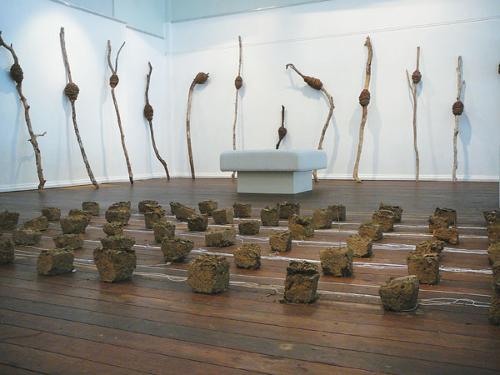
The winding way
Cairns-based artist Tijn Meulendijks considers the plant world as his medium. His exhibition, Natura est ars, held at Umbrella Studio in Townsville in 2007, was concentrated around a single plant community gathered while walking in a coastal Melaleuca swamp after fire had affected the environment.

The error of our ways: Madeleine Kelly
Brisbane-based artist Madeleine Kelly's oil paintings approach big issues through precise depictions of incongruous narratives which draw on both personal and mythological sources. Her comments on global issues like oil and pollution, human folly and its consequences, are framed like dream scenarios that touch us all. Kelly came to Australia from Germany when she was two and the celebrated 19th century German childrens story Struwwelpeter written and vividly illustrated by Heinrich Hoffmann echoes in her imaginative paintings of cautionary tales and surreal spaces.

The whistleblower of Discovery Bay
Carmel Wallace makes artworks with flotsam and jetsam. They comment on the immense amount of human debris she finds on the shoreline as well as on the scarred ecologies of the sea and the land. She also instigated the Great Southern West Walk project (a NETS Victoria exhibition touring throughout 2008) that brought a diverse range of artists to the chain of beaches, national parks and state forests located to the west of Portland near the Victoria-South Australian border. The project was driven by her need to develop her own knowledge and affinity for the land, to explore how art might contribute to environmental solutions and to explore walking as an all-encompassing method of experiencing the environment.

World tree: sounds of a bigger picture. Alison Clouston and Boyd
Alison Clouston and Boyd use sound and sculpture in layered and immersive installations that draw attention to delicate and complex systems in nature and what humans have made of them. 2007 is the first year they have made an artwork with a formal carbon audit and offset. Their recent art-making has caused them to become vegetarian. They believe that
Today we humans need to relinquish this deeply embedded sense that we will be saved by some force beyond us, we alone have to sort out the mess we have made of this planet Earth, our only home.

Chance encounters: Pamela Kouwenhoven and Peter McKay
Two South Australian writers work with discarded materials to make strong commentaries on contemporary life. Pamela Kouwenhoven uses old empty plastic car battery cases to make Rosalie Gascoigne-like collages of faded colour and worn histories. Like her signature works using malthoid taken from beneath rainwater tanks, they have a strong environmental agenda, drawing attention to beauty as well as responsibility. Peter McKay makes playful works with serious messages. At night he makes patterns in oil stains on the road with glitter and photographs them. These works collapse the infinite into the accidental as galaxies appear on the ground.

Writing images with words: an inheritance of ambiguous faces
Beirut-based artist and writer Walid Salek's book of essays, called Jane-Loyse Tissier, deals with stereotyping in art. He is concerned with the way the Third World is often treated as a cliche of constant emergency and crisis and not as a subjective and historical space. His essays reinterpret some canonical works of Western art by artists like Titian, Courbet, Ensor, Giotto and David. His claim is that all pictures and all interpretations are contingent and thus in defending the Third World's right to its own interpretations based on its own values the entire world is being defended.

Rabih Mroué and Lina Saneh interview
Rabih Mrou and Lina Saneh are Lebanese performance artists. In their work called Whos Afraid of Representation?, currently touring Europe, they describe the work of over fifteen well-known performance artists from Chris Burden and Marina Abramovic to Stelarc and Rudolf Scwharzkogler whose violence occurs within the safe and sanctioned space of the art world. They contrast this symbolic violence with descriptions of violent murders in Beirut. The work draws attention to the way violent deaths in Beirut are as ephemeral as the newspapers they are reported in while the violence practiced by the performance artists becomes history and the artists gain authority.

The revolution will not be televised: the changing landscape of film and video production in the Arab world
The situation of Arab cinema today, while it varies from Morocco to Abu Dhabi, is at an interesting turning point due to digital technology and political and economic events. In spite of censorship there are increasingly more film festivals and a burgeoning audience of cinephiles. The 2007 Cinema East Film Festival in New York celebrated independent film production:
At a moment when mainstream news seems helplessly captive to global conflicts, the war on terror and the clash of fundamentalisms, independent cinema has come to be regarded as a substitute for representing people, places and their stories. Filmmakers from the region are the most enchanting human rights activists, the most playful analysts, the most imaginative historians but first and foremost, the most generous and emboldening artists.

Handling the Adelaide Biennial
Stephanie Britton interviewed Felicity Fenner, curator of the 2008 Adelaide Biennial of Australian Art, to find out what Handle with Care really means in the twenty-first century.

Biennale of Sydney 2008: Carolyn Christov-Bakargiev
Tracey Clement interviews Carolyn Christov-Bakargiev, curator of the 2008 Biennale of Sydney, and finds out what she thinks about the Stendhal Syndrome, Biennale Syndrome and the politics of language.
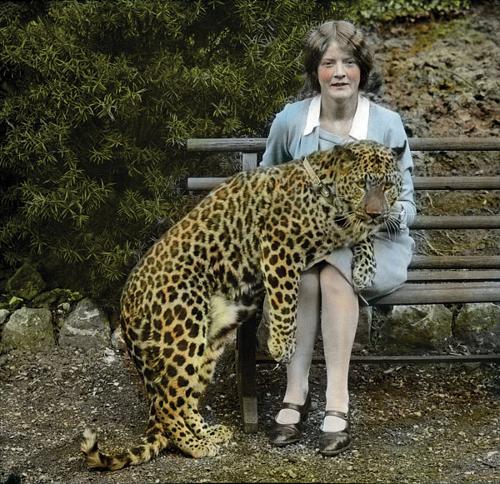
Fierce or Friendly: Humans in the Animal World
Curators: Craig Judd, Kathryn Medlock, Peter J. Hughes, Vicky Farmery Tasmanian Museum and Art Gallery (TMAG) 14 December 20076 April 2008

Migratory Projects: The Drive Out Cinema
Andrew Sunley Smith Perth Institute of Contemporary Arts (PICA) 6 December 2007 - 27 January 2008
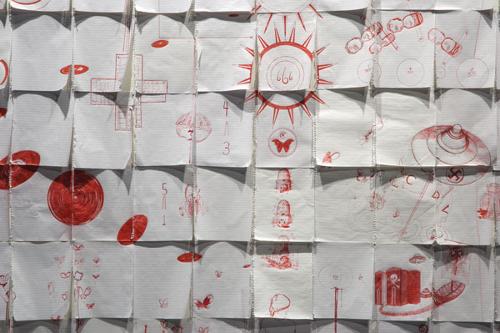
Economy
Anthony Kelly, Pilar Mata Dupont & Tarryn Gill, Bennett Miller, Tom Muller, Anna Nazzari, Mark Parfitt, Ric Spencer, Brendan van Hek (WA) Curator: Consuelo Cavaniglia PICA 1 - 25th November 2007

[the space in between] Book project
Curated by Tara Gilbee VCA Margaret Lawrence Gallery, Melbourne 13 July -4 August 2007 Sidney Myer Work on Paper Gallery, Bendigo Art Gallery 15 March - 13 April 2008 Umbrella Studio Contemporary Arts 8 August - 14 September 2008

Our Lucky Country - (Still Different)
Nuha Saad, Soda_Jerk, Ron Adams, Mimi Tong, Nana Ohnesorge, Liam Benson, George Tillianakis, Huseyin Sami, Adam Norton, Ruark Lewis, Maria Cruz, Elizabeth Day, Michelle Hanlin, Sarah Goffman, Anna Peters Hazelhurst Regional Gallery 8 December 2007 - 3 February 2008

Making it Modern The Watercolours of Kenneth McQueen
Curator: Samantha Littley Queensland Art Gallery 10 November 2007 5 May 2008

from time to time one talks to the moon: Aldo Iacobelli
Curator: Linda Marie Walker Experimental Art Foundation, Adelaide 15 November - 15 December 2007

Robert MacPherson, Vernon Ah Kee and Jeremy Hynes
Institute of Modern Art, Brisbane 8 December 2007 - 2 February 2008

Wonderful World
Curator: Erica Green 12 October 7 December 2007 Anne & Gordon Samstag Museum of Art

Replay: Christian Marclay
Australian Centre for the Moving Image (ACMI) Melbourrne 19 November 2007 - 2 February 2008

Two Faces of Contemporary Art in China
In these days of 'Theory', innovative curatorial practice calls for a certain empirical discipline; by revealing the arts subtle and yet detectable connections with the social world. Having established this position, Souchou looks at the controversial performance work of Chinese artist Zhang Huan; a practice which displays a confronting yet contemplative look at the relationship between people and society in a post-Mao and contemporary China. An ongoing process of losing oneself in order to understand the effects of cultural and material life, and to animate the desire for release.
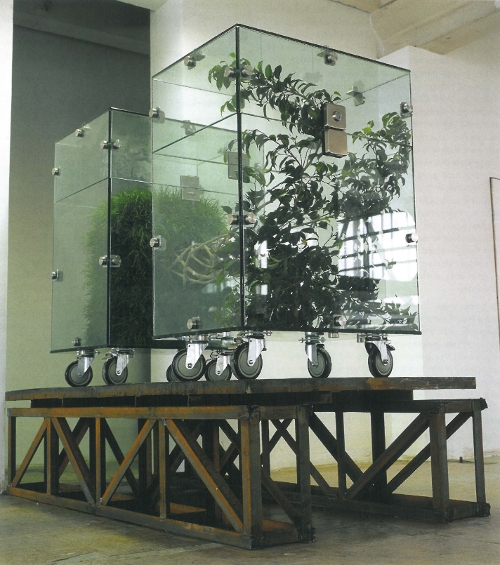
The Cost of Creativity?
The fabric of the contemporary art scene in China comprises the densely woven strands of politics, economics and aesthetics specific to the immediate socio-cultural framework: a cloth that is today increasingly more sophisticated that the coarse serge of the past. A vibrant contemporary art scene which emerged in the early 1980's following years of rampant cultural destruction and rigid doctrinal control over its form and content. This article focuses on the economic viability of contemporary Chinese art, a movement that found its key members a part of the lower socio-economic class.

Backflow: Returned Chinese Artists
The decades since China's Great Proletarian Cultural revolution (1966-1976) have witnessed a tide of artists leaving China, and now returning, propelled in part by the desire to locate a healthy climate for art production. There was a time when western society provided a climate more conducive to creativity and these artists sought better living conditions and freedom of thought and expression. Now many of these artists fight a battle over the encroaching forces of materialism and globalisation and there is an increasing backflow of these artists returning to China in the light of new policies valuing creative output and generally higher living standards.

Chinese Art Sydney Style
After more than a decade since many of the Chinese artists who have the highest profiles here migrated to Australia, several of them are currently at a crossroads with respect to their careers and what their next steps will be. As is the case with Guan Wei and Ah Xian, two of the best-known mainland Chinese artists working in Sydney, there has been an invested interest in exposing their work to local and international audiences. Teo looks at some of the initiatives which have propelled these artists work both locally and internationally and the various approaches in bringing together aspects of Australian and Chinese life and culture.

Xiandai Shufa: Brushes With Modernism
As similar to the changes that came to be called 'modernism' in the West in the nineteenth century, the nature of changing artistic traditions in the East are as far-reaching and as significant in that they also prefigure a contestation of the tradition/modernity duality. This article looks specifically at the tradition of Chinese ink painting and calligraphy and the insistence by Chinese critics that evolution - if not revolution - in these forms is occurring. Moreso the concentration here lies with modern calligraphy (xiandai shufu) and the distinguishing of calligraphy from the generalised use of Chinese characters in contemporary art.

Broadening the Scope
The First Beijing Biennale, held in September of 2003 somewhat echoed the Venice Biennale in it's approach to expansive venues and activities. Although Chinese Officials are realising the importance of contemporary art and its role in promoting international activities in Beijing, it is the artists themselves who have managed to expand the scope of contemporary art events in the city. Furthermore the event hosted a series of forums and international conferences to promote dialogue between Chinese experts and their international counterparts.

Thinking About Guan Wei
With Traditional Chinese art education requiring students to master the painting styles of each historic period, it is not surpirising that Guan Wei's own style (having painted systematically from Impressionism to Postmodernism over ten years) has rendered his work appealing to Australian audiences. His works are cool in colour, surreal in style, quirky in wit. Wei's work displays a graphic sensibility and visual language similar to that of Leunig's cartoons and is successful for these exact reasons.

A Lens on Diversity
'To imagine a language is to imagine a form of life' - Ludwig Wittgenstein. So to it is that to read the works of contemporary Chinese photography is to read Chinese social life. During the middle of the 1990's photography was admitted to the canon of contemporary Chinese art and the Chinese economy started to reflect a 'glocal' trend through the merging with the global economy. As a result Chinese artists began experimenting with new media and dialogue between Chinese and international artists became more frequent. This article looks at the diversity and proliferation of contemporary Chinese photography and the shifting perceptions of Chinese society from an international perspective.

Wang Jianwei: Working on the Boundaries
New media in China is probably the most rapidly developing medium used by contemporary artists in that country. As an art form new media characterises a form of communication with an almost endless capacity to be manipulated, making it the perfect tool to express a new artistic confidence. The intent of this article is the concentration on the work of one artist Wang Jianwei, whose work typifies many of the issues being expressed nationally through contemporary art. His is a practice differentiated by the way he slides from media to media allowing the intent of the art to govern the form of expression.

The Decade of the Rise of Chinese Women Artists
Socio-economic conditions and traditional ethics encourage Chinese women to maintain the ideal of harmony between genders, whilst certainly pursuing and endorsing independence. The state of women's art in China is an increasingly pluralistic art establishment within which international feminist thought has been a great source of energy but where there exists a clear opposition to the 'we don't bite' attitude. This article examines the impact of western feminist thought on a group of Chinese women artists who studied in Europe and America and the new awareness of their own feminist identities that came as a result.

Alors, La Chine?
Alors, La Chine? was a major exhibition of contemporary Chinese art at the centre Georges Pompidou, Paris, from 25 June to 13 October 2003. An exhibition of this kind had been planned for several years and included several research visit to China by Pompidou curators. Eventually the French government intervened when it decided that such an exhibition should be part of a planned two-year series of Franco-Chinese exchanges. Clark examines some of the political and ethical issues which surfaced as a result of this major event being held.

Changchun, China: to Confront or Confirm
Scarlett pays homage to the opening of an International Sculpture Park at Changchun, northern China, which bosts 315 works by numerous international and local provincial Chinese artists. Scarlett looks at this event and examines how audiences react to both controversial and more accepted and confirmed art within a society.

Economic Downturn in Hong Kong Breathes New Life Into Culture
The situation today for creative, especially cultural, industries in Hong Kong is perhaps better than it has been for many years. Tsong-Zung looks at the effects of a dramatic economic downturn in Hong Kong as it is providing artists with two of the most defining conditions for creative work, leisure and space.
Faites Vos Jeux: Aesthetics and Dis/Order in Kennett's Victoria
Explores the idea that basic qualitative aesthetic lifestyle values in Australia are by no means neutral but highly coloured by political judgements. The mood and style of the governance of Victoria can be read as an issue of taste and lifestyle as well as political ability/responsibility.
Good Taste: Food, Consumption & Pleasure
Tasteless
Editorial for the edition on Food Consumption and Pleasure. Summarises the treats which lie in store for the reader of the issue, linking the disparate approaches of the various writers .
Good Taste: Food, Consumption & Pleasure
Pictures on Plates
Divided into subheadings 'The Parsley Garnish' 'La Nouvelle Cuisine' 'Transgressions' the author explores the role of food and decoration -- pictures on plates -- in Australian (and wider) cuisine from the 1950s through to the 1990s. Refers to Marinetti's The Futurist Cookbook of 1932. Examines photographs of food and the paradox of indulgence and self denial.
Good Taste: Food, Consumption & Pleasure
Mediterranean Paradise: artists and the kitchen: David Strachan and John Olsen
Examination of the work of David Strachan and John Olsen from the 1950s in Europe to Australia in the 1980s and the pleasures of painting and food. Linking of painting with the recipes and philosophies of Elizabeth David.
Good Taste: Food, Consumption & Pleasure
Breadline: Women and Food
Since the advent of 1970s feminism, the joining of women food and art has been about mixing a metaphoric concoction of consciousness raising, community and corporeality. Looks at women's art movement practice in South Australia
Good Taste: Food, Consumption & Pleasure
Cookbooks
Examines the relationship between food, cookbooks and the art of illustration. Cooking however elaborate is always about the assuaging of hunger but.....Looks at Elizabeth David's 'Italian Food' published in 1954 and illustrated by Renato Guttoso. John Minton had illustrated David's earlier books.
Good Taste: Food, Consumption & Pleasure
Bush Tucker: Some Food for Thought
Bush tucker (food and medicinal purposes) for indigenous communities is looked at in terms of commercial opportunities with traditional knowledge finding application in contemporary contexts. Examines the role of aboriginal people in scientific research and subsequent commercial exploitation. Also looks at issues of Aboriginal intellectual property.
Good Taste: Food, Consumption & Pleasure
Honey: It's Meaning in Aboriginal Art
Across the far north of Australia, honey is enshrined at the centre of life's meaning as a nourishing and creative presence in a landscape derived from the Ancestral Beings themselves. Looks at the visual representations of honey for the Dhuwa and Yirritja people. Discusses the creation myths and their contemporary expressions in bark paintings and sculptures.
Good Taste: Food, Consumption & Pleasure
Nostalgia, Nation and Gobstuff
Linking of food and memory == elements of nostalgia for other times and places. Proust and James Joyce and the role of food in their writing and the centrality of place or locality in food. The 'authentic' and the 'other' have been amalgamated.
Good Taste: Food, Consumption & Pleasure
Greek as a Souvlaki
Musings on seeds, weeds and the author's mother's cooking. An exploration of Greek food, issues of multiculturalism and history. Touches on genetically modified food and colonisation.
Good Taste: Food, Consumption & Pleasure
Fast Food: Don't spoil your appetite
Art and its relation to the museum may be seen in terms of the analogy of food passing along the intestinal tract. Looks at exhibitions like EAT 1998. Food is one kind of culture that is always in demand. Why not give the public what it wants. Eating in art galleries may break down the barriers of art as an exclusive kind of experience,
Good Taste: Food, Consumption & Pleasure
An Gotta Mor: A Sculpture for the Irish Famine
In 1999 The Australian Monument to the Great Irish Famine at Hyde Park Barracks was unveiled. Designed by Hossein and Angelea Valamanesh, it commemorates the arrival in Australia of young women many of whom were orphaned by the great hunger. National competition within the constraints of the Francis Greenway building and historic precincts.
Good Taste: Food, Consumption & Pleasure
Force-Fed: Food in the Art of Destiny Deacon.
Discusses 'Home Video' made in 1987, 'Welcome to my Koori World' (1992) and 'I don't want to be a Bludger' (1999). Food in these videos is the bearer of sly innuendo, misguided intentions, complicated emotions. In these invented worlds food is either inedible, unnourishing or unavailable or a lurid torrent of junk food.
Good Taste: Food, Consumption & Pleasure
Homemade: The Rosalind Brodsky Cookery Show
Looks at the CD Rom by Suzanne Treister 'No other symptoms - Time Travelling with Rosalind Brodsky'. There are two cooking segments on the CD. The cooking demonstrations are imbued with historical and cultural pain and prejudice.
Good Taste: Food, Consumption & Pleasure
My Millennium Dome: Domes Tripe and Teacups in the art of Donna Marcus
Donna Marcus series of Millennium Domes imagine the everyday aesthetic practices of living in houses and with objects in terms inflected by processess of memory, dream and the imagination. Reference to the geodesic domes of Buckminster Fuller organic materials and recycling.
Good Taste: Food, Consumption & Pleasure
Nariphon: How to eat a bowl of noodles
Examines the series of paintings Nariphon I-III by Phaptawan Suwannakudt which deal with issues of change and consumption, absorption of multicultural practices into dominant cultures -- Prostitution (girl fruit) and survival in Thailand. Her work blurs the distinctions between meditation and revolution (east and west) and between tradition and modernity.
Good Taste: Food, Consumption & Pleasure
Recipes: Writers and Artists Share their Favourites
Recipes put forward by the artists in this issue for all sorts of delectable and interesting dishes - some real and some not so real. Includes recipes of John Olsen, Daniel Thomas, Anders Ousback, Gay Bilson, Juliana Engberg, Phaptawan Suwannakudt, Kajri Jain, Yao Souchou, Rosalind Brodsky, Anne Graham, Jennifer Isaacs, Gwyn Hanssen Pigott, Nikos, Brigitta Olubas, Freda Freiberg, Hetti Perkins and Destiny Deacon.
Good Taste: Food, Consumption & Pleasure
Art + Food = Lucio
Review of the book 'The art of food at Lucio's' by Lucio Galletto and Timothy Fisher, introduction by Leo Schofield. Foreword by Robert Hughes Craftsman House 1999 Sydney RRP $65.
Good Taste: Food, Consumption & Pleasure
Set Menus
Book Review Reel Meals, Set Meals: Food in Film and Theatre by Gaye Poole, Currency Press Sydney 1999 Links the consumption of food with the consumption of culture.
Good Taste: Food, Consumption & Pleasure
Designing the Hot Potato: Food, Design and Culture
Book Review Food: Design and culture Edited by Claire Catteral London; Lawrence King Publishing in association with Glasgow 1999 Festival Company
Good Taste: Food, Consumption & Pleasure
Craft and Contemporary Social Ritual: Eating and Drinking
Book Review Craft and contemporary Social Ritual: Eating and Drinking Craft Victoria Melbourne 1999 $35 "Discussion about craft has moved apace and this publication proves it."
Good Taste: Food, Consumption & Pleasure
Rosalie Gascoigne AM
Obituary for Rosalie Gascoigne AM Born Auckland 25 January 1917 Died Canberra 23 October 1999
Good Taste: Food, Consumption & Pleasure
John Davis
Obituary for John Davis Born 16 September 1936 Died 17 October 1999
Good Taste: Food, Consumption & Pleasure
Wladyslaw Dutkiewicz
Obituary Wladyslaw Dutkiewicz Born Lwow Poland 21 February 1918 Died Adelaide 2 October 1999
Good Taste: Food, Consumption & Pleasure
Antony Hamilton: Mythology of Landscape
Survey exhibition, Art Gallery of South Australia
3 September 7 November 1999
Good Taste: Food, Consumption & Pleasure
Twenty Five Years and Beyond: Papunya Tula Painting
Curated by Doreen Mellor and Vincent Megaw
Flinders University Art Museum City Gallery, Adelaide
4 September - 17 October 1999
Flinders Art Museum Campus Gallery
6 September - 22 December 1999.
Good Taste: Food, Consumption & Pleasure
Body of Language: Roseanne Bartley
Craft Victoria
Melbourne
5 28 August 1999
Good Taste: Food, Consumption & Pleasure
One Sculptural Furniture
Annette Cock, Yvette Dumergue, Kathy Fox
Stairwell Gallery, The Public Office, Melbourne
Good Taste: Food, Consumption & Pleasure
Messengers from the West
A video-art project by Mayza Hamdan, Joanne Saad and Marian Abboud
Artistic Director: Vahid Vahed
Artspace
30 Sept - 23 October
Good Taste: Food, Consumption & Pleasure
What John Berger Saw:
Robert Boynes, Susan Fereday, Elizabeth Gertsakis, Dean Golja, Paul Hoban, John Hughes, Tim Johnson, Peter Kennedy, Peter Lyssiotis, Polixeni Papapetrou, Gregory Pryer, Anne Zahalka, Constance Zikos, The exhibition features a collaborative work by John Berger and UK artist John Christie.
Canberra School of Art Gallery
10 September - 6 November 1999
Australian Tour
2000-2001
Good Taste: Food, Consumption & Pleasure
Remembering Chinese: Gregory Kwok-Keung Leong
University Gallery, Launceston
5 - 27 August 1999
Craft Victoria
30 Sept - 30 Oct
Burnie Regional Art Gallery
13 Dec - 1 Jan
Good Taste: Food, Consumption & Pleasure
WARP
John Vella, Neil Haddon and Phillip Watkins
Curated by David Hansen
CAST Gallery, North Hobart
9 July - 1 August1999
Good Taste: Food, Consumption & Pleasure
Robert Juniper
The Art Gallery of Western Australia
11 September - 21 November
Good Taste: Food, Consumption & Pleasure
Brenda L. Croft, Destiny Deacon & Glen Hughes
Brenda L Croft:In My Father's House
Destiny Deacon:Postcards from Mummy
Glen Hughes:One Family:
Perth Institute of Contemporary Art
12 August - 12 September 1999
Good Taste: Food, Consumption & Pleasure
The Third Asia Pacific Triennial of Contemporary Art
Queensland Art Gallery
9 September - 26 January
Good Taste: Food, Consumption & Pleasure
History and Memory in the art of Gordon Bennett
Brisbane City Gallery; July 29 - Sept 4, 1999
Ikon Gallery, Birmingham: Nov 20, 1999 - Jan 23 2000
Arnolfini Galleries, Bristol: Jan 29 - March 12, 2000
Henie Onstad Gallery, Oslo: April 9 - June 12, 2000
Good Taste: Food, Consumption & Pleasure
Museums on the Edge
Guest editor for Vol 12 No 1 Museums on the Edge. This edition was founded on a perception of a lack of any quantity of readily available material on the Australian and New Zealand experience of museums.
Museums on the Edge
Some Thoughts on Museum Futures
The quintessential purpose of Museums is to encourage and instil the joy of intellectual and aesthetic discovery. Abstracted partly from a public lecture entitled 'Ideas -Heresies even - for Museum Futures' given in Perth for the Western Australian Government Department of the Arts Task Force on Museums in August 1991.
Museums on the Edge
From Curiosities to the Hyper-Real: Notes on Context in Museum Anthropology Exhibitions
Daniel Thomas provoked a distinct murmur at the 1990 CAMA Conference when he suggested that art museums have a greater capacity to disturb and move people than other cultural museums. If this is true and I think it is.....
Museums on the Edge
Aboriginal People and Museums: Restricting Access to Increase It
The South Australian Museum has the world's largest and most comprehensive collection of Australian Aboriginal material culture. It also has a vast archive of information about that material and about other aspects of Aboriginal life in the form of photographs, films, audio tapes, diaries and other records.
Museums on the Edge
Towards the Light: The story of One New Age Gallery's Quest for Purpose and Relevance in a Changing World
On 23 October 2002, yet another Council of Australian Museums Associations (CAMA) ran down. Conferees were already half deep in thought about melting credit cards and distant work site desks stacked high with urgent files. Well Not exactly CAMA...
Museums on the Edge
Cultural Diversity and the Challenges of Access
Cultural diversity has become a key issue in the 1990s for a number of reasons. In the United States we have recently completed a census. The results of that census indicate a dramatic change in the nation's demographics.
Museums on the Edge
Urban Regions and the City Centre: A Changing Cultural Relationship
One of the curious things about very large cities is the gulf that exists between the inner city and the outer suburbs or hinterland.
Museums on the Edge
Exhibiting Conflict - Who Dares?
Museum exhibitions tend not to challenge visitors with critical perspectives, contradictory points of view or subject matter which is controversial. I would like to explore different ways that conflict might be included in exhibitions and used to further our understanding of the past.
Museums on the Edge
To Have and To Hold: Art Museum Departments
One of the things which continues to fascinate me about museums is how, despite the vast amount of talk about displaying material culture, the often personal, often idiosyncratic, often haphazard decisions about departments are very rarely mentioned. Yet these decisions are central to much of the museum's collection, display, exhibitions and research programme.
Museums on the Edge
Whams and Whimms: An Exercise in Classification and Meaning
Interview with Louise Dauth about issues of gender. Dale Spender is a foundation member of the Women Heritage and Museums Group.
Museums on the Edge
The Ownership of Cultural Meaning: Local Museums and Access
According the the Australia Council figures in 1990 a number of people exceeding the entire population of Australia visited the 187 Australian Museums that employed paid staff in 1989/90 at a cost, for maintence, development and operations in excess of $13.00 per head of population, excluding any charges imposed on entry to museums or exhibitions. And what does $13.00 buy for the Museum going public?
Museums on the Edge
Implementing Aboriginal and Multicultural Policy in the Museum Sector
Helen Andreoni writes on matters which are addressed in the report commissioned by the Office of Multicultural Affairs (OMA) by Amareswar Galla (also in this edition of Artlink).
Museums on the Edge
Background to the Project: Heritage Curricula and Multiculturalism (HC&M)
Background to the National Agenda for a Multicultural Australia with the final report to be released by the Office of Multicultural Affairs OMA in mid 1992. See also the article by Helen Andreoni in this issue.
Museums on the Edge
European Museums Make an Exhibition of Themselves
Report on the 3rd International Salon of Museums and Exhibitions (SIME) at the Grand Palais Paris January 1992
Museums on the Edge
Repatriation of Papua New Guinea's Cultural Heritage
Jim Specht of the Australian Museum Sydney, has written that "public and private collections of archaeological and ethnographic specimens around the world contain tens of millions of specimens yet only a minute fraction of this total is actually held in its countries of origin" ; most of this material he says, was acquired through colonial or military occupation.
Museums on the Edge
Designing for Interesting People
Andrew Andersons is, and has been, engaged to contribute to many of Australia's leading art museums as well as to other public buildings and spaces. His work might be described as adaptive; accommodating to the style and typology of the major buildings on which he has worked as well as responding to the varied views of curators with whom he has co-operated closely when designing galleries.
Museums on the Edge
Abel Tasman at Dunedin
Looks at the exhibition 'Terra Australis Incognita' at the Dunedin Public Art Gallery in New Zealand, to celebrate the 350th anniversary of Abel Tasman's discovery.
Museums on the Edge

